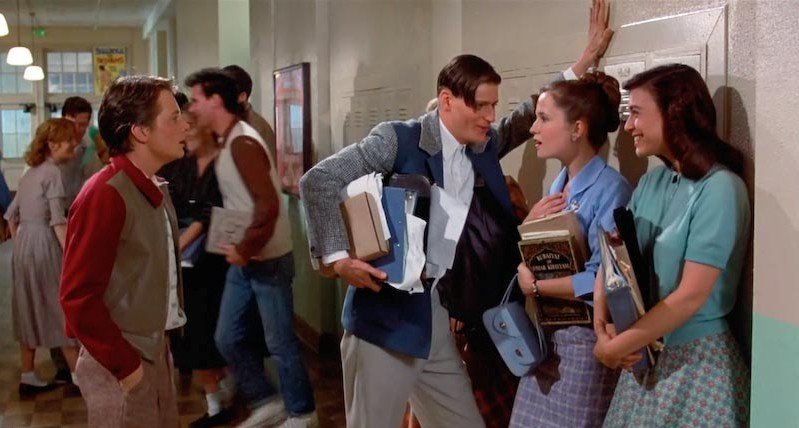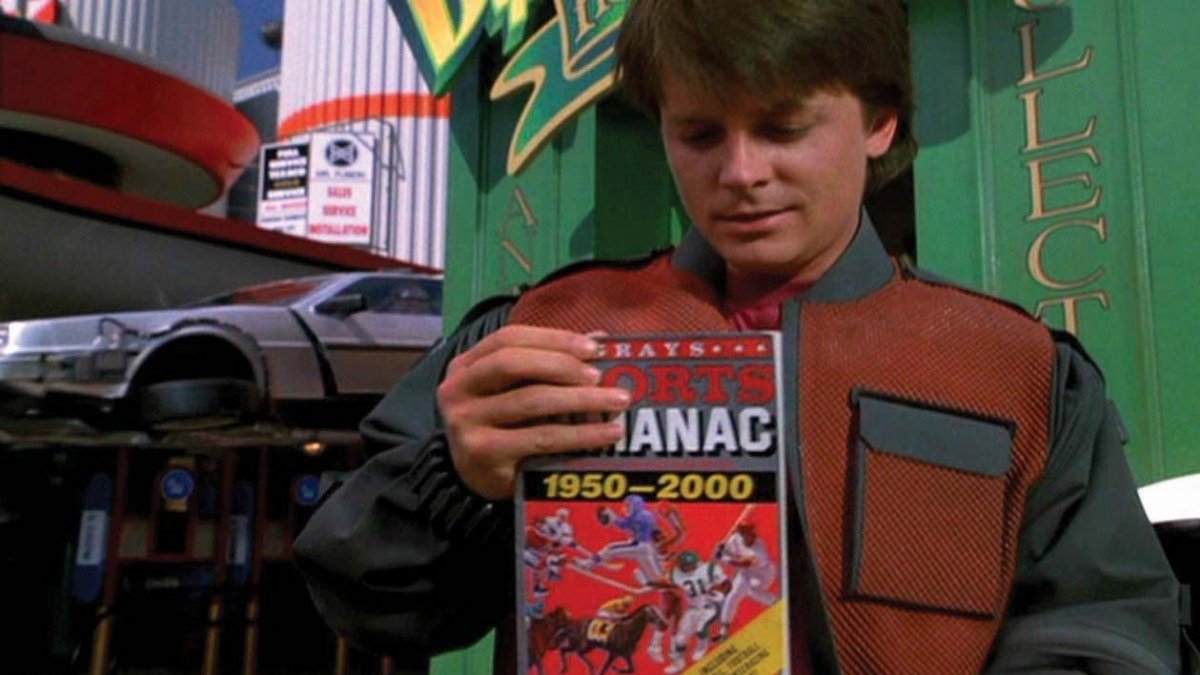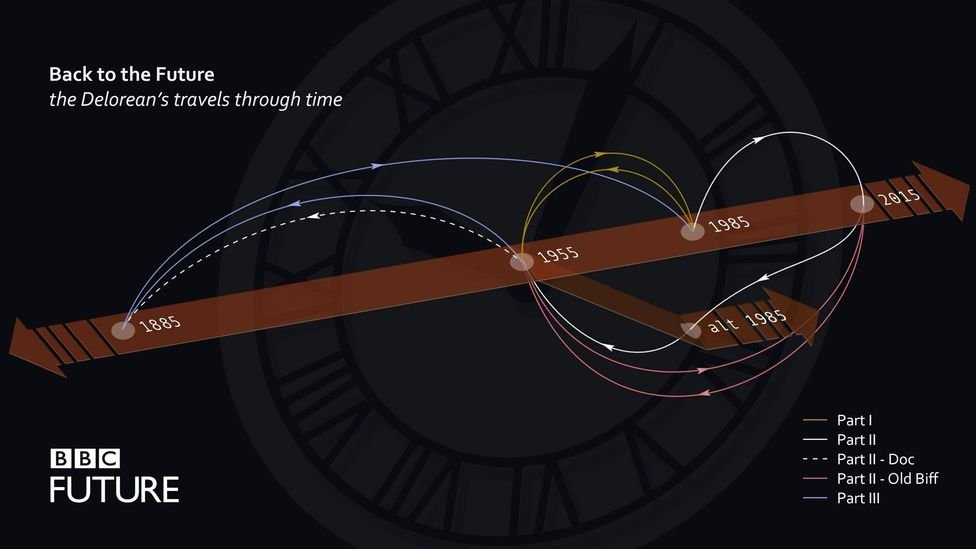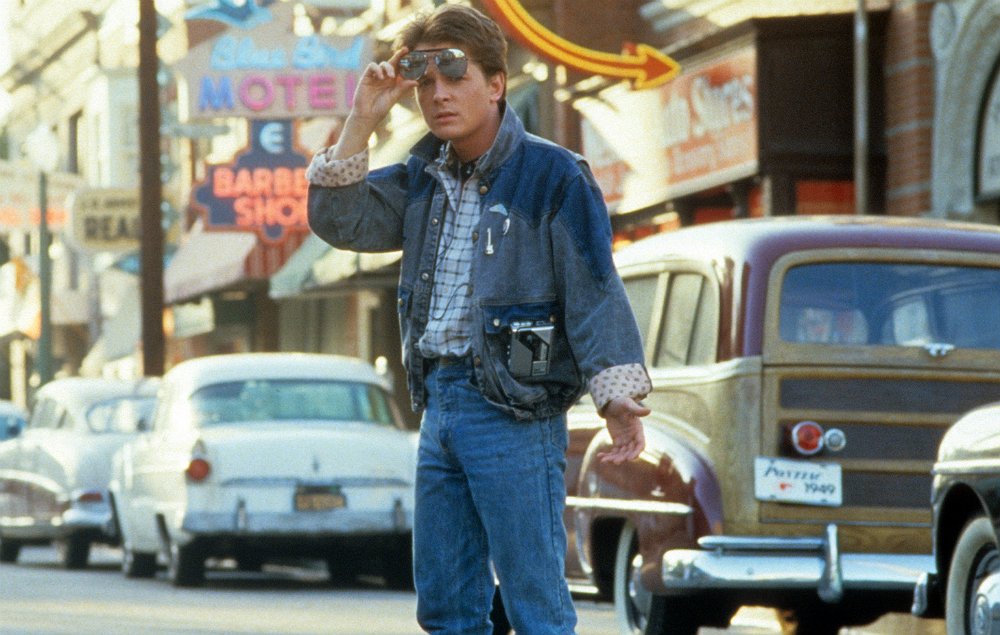
Relevance Map Part II
by Ellie Hoshizaki
This relevance map is a reflection on the relationships between ideas in Design Frameworks, a Spring 2023 graduate course at UC Berkeley — and what those ideas mean to me in the context of my favorite movie, Back to the Future.
Key Takeaway
“Weird” or “eccentric” thinking isn’t that weird. In Back to the Future, Doc Brown’s eccentric ideas led him to invent a time machine. In Design Frameworks, presenting eccentric ideas in a compelling way can lead to innovation at a potentially global scale. I argue that eccentric ideas should be viewed with an open mind. It is more important to evaluate ideas in terms of their levels of causal creation and destruction.
Back to My Future
Some of my favorite childhood memories with my dad are the times he nurtured my curiosity. Growing up in Los Angeles, I would occasionally go to Universal Studios Hollywood. While I was there, I loved going on the Back to the Future ride with my dad. When I was 11, I asked him what the ride was all about. He borrowed a copy of the Back to the Future trilogy on VHS and we watched the first film together that night. I instantly fell in love. Eccentric thinking, causality, alternate futures, and temporal artifacts are a few concepts related to both BTTF and Design Frameworks.
Synthesis
Causality
Causality is a core concept in design frameworks. Causal Layered Analysis, or CLA, is one way of exploring causality of a given domain in the temporal present and past.
Causality is also repeatedly explored throughout the Back to the Future trilogy. Marty, the film’s protagonist, is 17 years old when he accidentally time travels 30 years into the past from 1985 to 1955. While Marty is in 1955, he meets his parents as teenagers. The ensuing chain of causality threatens his very existence.
Alternate Futures and Temporal Artifacts
Alternate futures are analyzed through methods such as Futures Cones in design frameworks.
In Back to the Future Part II, the Sports Almanac is a temporal artifact with interrelationships to causality and alternate futures.
An alternate future occurs in 1985 when the Sports Almanac is brought back from 2015 to 1955.
Reflection and application
These ideas and their interrelationships are meaningful to me personally and my work as a designer because they are evidence that imaginative thinking has the potential to shape design in the real world. Science fiction topics I loved as a child, especially time travel, are still relevant.
In certain times throughout my life I’ve wondered what it would be like if I could meet my parents when they were my age. Honestly I feel uncomfortable imagining it now at age 32 because they had reached life milestones at my age that I have yet to experience. For context, when my mom was 32 she was married to my father, they owned a house and they were trying to conceive a child. In comparison, I’m struggling in my relationship, I question if I’ll ever want marriage and children, and owning a house is a distant dream. In the past 30+ years since my mom was my age, these milestones have endured as societal expectations, but they are slowly being challenged.
I am interested in exploring how these societal expectations can be redesigned. As a current member of the Frameworks team exploring “A New Kind of Marriage”, we’re forecasting an alternate future in the year 2057. I chose this year because I’ll be 67 years old in 2057, the same age my mom is now. What life experiences will we have in common? What will be different?
Relevance Map Part 1
Relevance map 1











